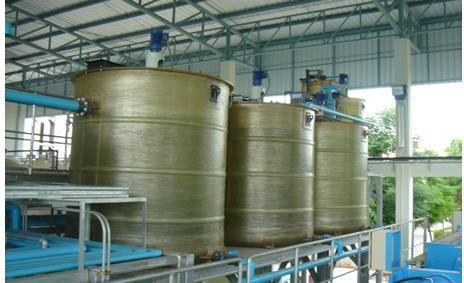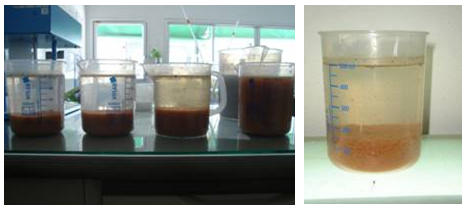Wastewater Treatment
ระบบบำบัดน้ำเสีย ระบบกำจัดไขมัน และน้ำมัน ระบบบำบัดน้ำเสียด้วยวิธีทางเคมี (Chemical Treatment System) ระบบบำบัดน้ำเสียด้วยวิธีทางชีวภาพ (Biological Treatment System)
Coagulation
Coagulation is the destabilization of colloids by neutralizing the forces that keep them apart. Cationic coagulants provide positive electric charges to reduce the negative charge (zeta potential) of the colloids. As a result, the particles collide to form larger particles (flocs). Rapid mixing is required to disperse the coagulant throughout the liquid. Care must be taken not to overdose the coagulants as this can cause a complete charge reversal and restabilize the colloid complex.
Flocculation, is the action of polymers to form bridges between the flocs. and bind the particles into large agglomerates or clumps. Bridging occurs when segments of the polymer chain adsorb on different particles and help particles aggregate. An anionic flocculant will react against a positively charged suspension, adsorbing on the particles and causing destabilization either by bridging or charge neutralization. In this process it is essential that the flocculating agent be added by slow and gentle mixing to allow for contact between the small flocs and to agglomerate them into larger particles. The newly formed agglomerated particles are quite fragile and can be broken apart by shear forces during mixing. Care must also be taken to not overdose the polymer as doing so will cause settling/clarification problems. Anionic polymers themselves are lighter than water. As a result, increasing the dosage will increase the tendency of the floc to float and not settle.
Once suspended particles are flocculated into larger particles, they can usually be removed from the liquid by sedimentation, provided that a sufficient density difference exists between the suspended matter and the liquid. Such particles can also be removed or separated by media filtration, straining or floatation. When a filtering process is used, the addition of a flocculant may not be required since the particles formed by the coagulation reaction may be of sufficient size to allow removal. The flocculation reaction not only increases the size of the floc particles to settle them faster, but also affects the physical nature of the floc, making these particles less gelatinous and thereby easier to dewater.





